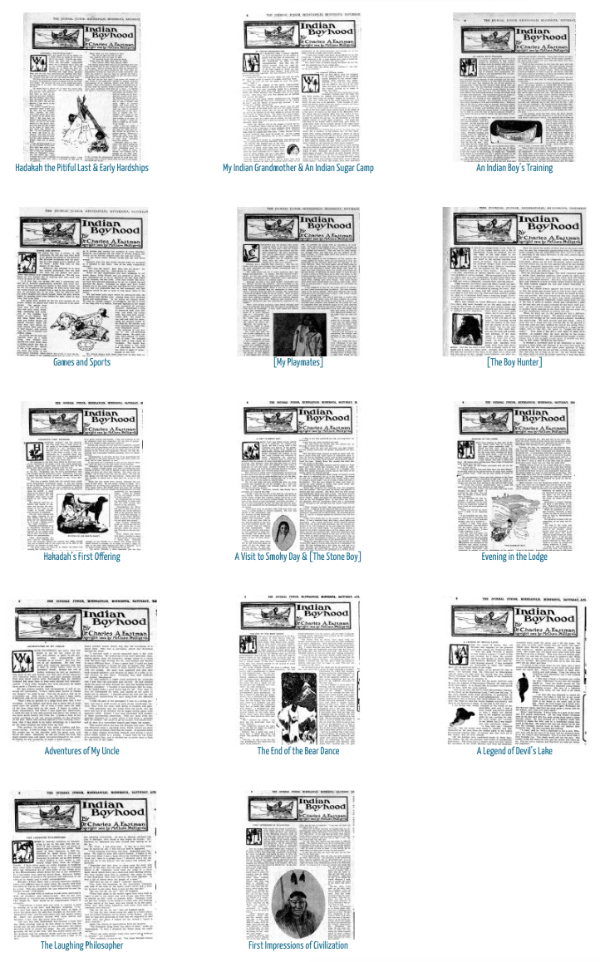Literature Links: Indian Boyhood

The primary source set above and the associated learning activities below were inspired by a discussion on the TPS Teachers Network, a free professional online community designed to host and facilitate conversations, connections, and collaborations among educators of all stripes about using primary sources to improve student learning.
In the discussion “S’a: Doctor, Author, Scout Master,” TPSTN Mentor and museum educator 
Activity Ideas
- Assign sections to individual students or have pairs read them aloud together.
- Encourage interested students to make recordings of the sections, then stitch them together to create an audio book version for the class or the school.
- During or after reading, have students complete one of the following graphic organizers: Event Happenings, Source Analysis KWL worksheet, Thinking Triangle.
- Have students use these question cubes to ask, and possibly answer, questions about the section.
- Have students make a single sketch that best represents the complete section.
- Have students storyboard their sections or create a comic book version of it.
- Encourage students to use the Native American History and Culture: Finding Pictures research guide to find primary source images from LOC.gov to illustrate their section.
- Have students create a frozen living picture that represents the section as a whole or one scene from the section.
- Have students act out a scene from the section.
- Have students write a paragraph or create a slide summarizing the section.
- Have students write a review of the section in 280 characters, spaces included, or less.
- Have students write a poem about the section or one inspired by it.
- Inform the students that the newspaper published most, but not all, of the text. A couple of sections were combined, a few were left out altogether, and several were slightly truncated. The Journal Junior editor said the book was too long to be printed in its entirety. Have students consider the questions below as they compare the sections they read with those from the Gutenberg text.
- Were any changes made? Was anything left out?
- What was the effect of those choices?
- Would you have made different editorial choices? Why or why not?
- Encourage students to read other sections of Indian Boyhood, including those not published in the newspaper series.
- Have students read the articles below to learn more about Ohíyesa/Dr. Charles A. Eastman, taking note of three things that they found particularly interesting, two things they found surprising or inspiring, and one thing they would like to investigate further.
- “Just Between You and Me” The Minneapolis Journal – The Journal Junior (Minneapolis, Minn.), December 13, 1902
- “Ohiyesa: ‘The Winner’” The Minneapolis Journal (Minneapolis, Minn.), November 24, 1903
- “An Indian Returns Home” The Redwood Gazette (Redwood Falls, Minn.) October 1, 1930
- Dr. Charles A. Eastman – Ohíyesa Aktá Lakota Museum & Cultural Center
- Have students write a short narrative chronicling an event from their childhood.
- Encourage students to search Chronicling America or the Library’s digital collections to conduct further investigations.
- Encourage students to read more stories about growing up at different points in history and from different cultural perspectives.
What other ideas do you have for using Indian Boyhood with students?
Related resources
